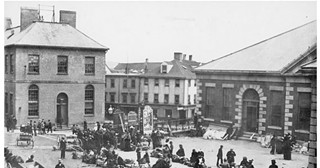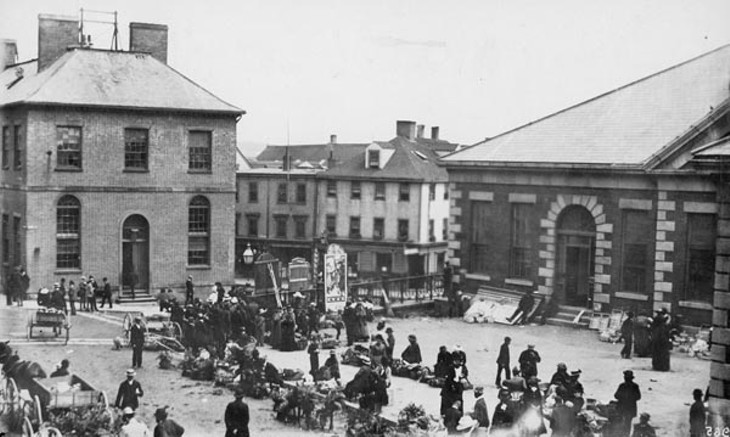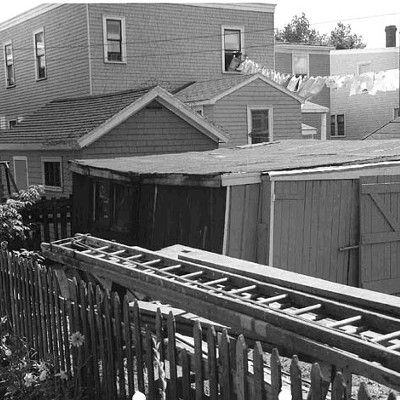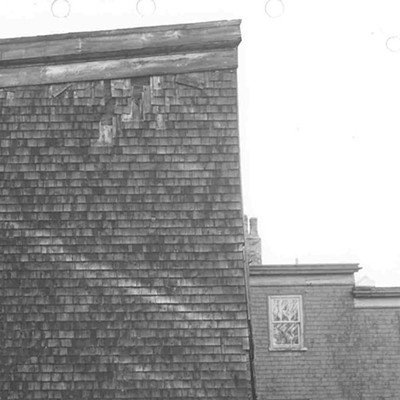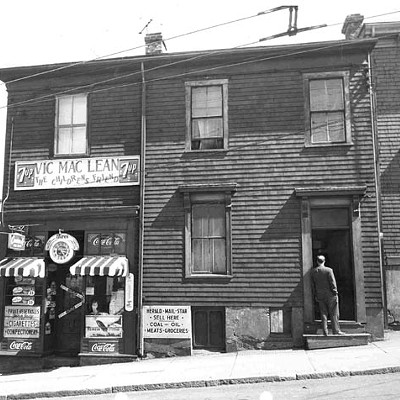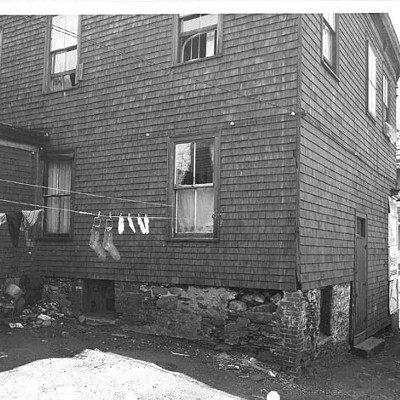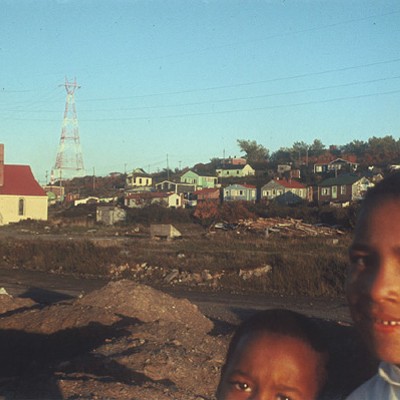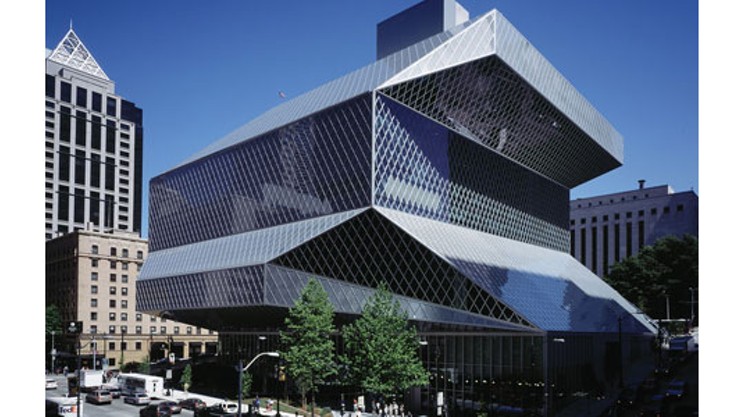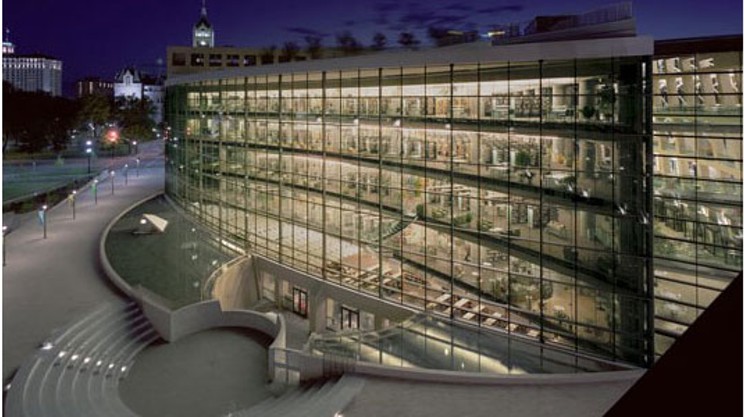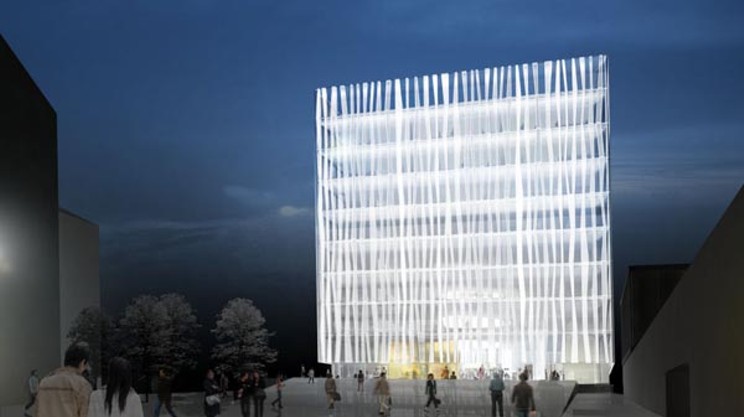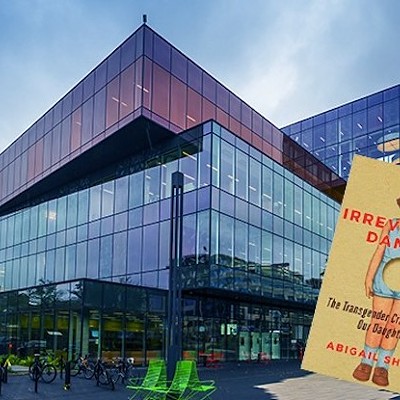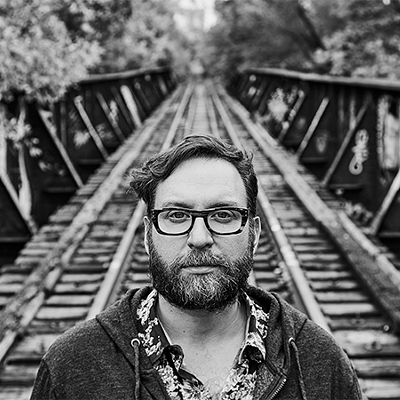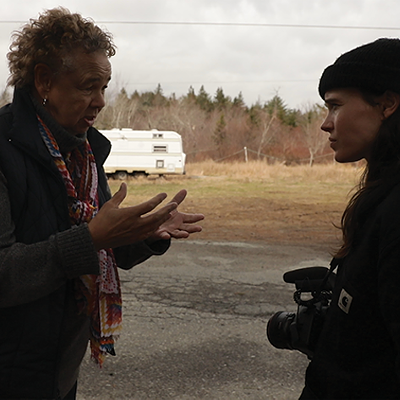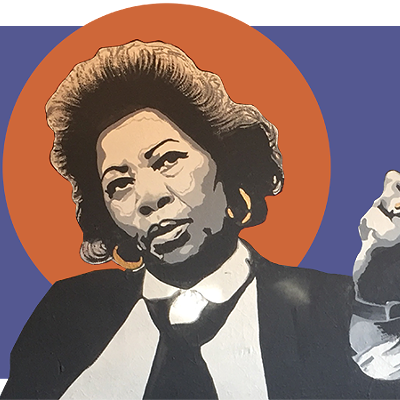The wind's whipping pedestrians into shape, insisting they play its game of Dodge the Debris. Another kind of detritus tells a story of the city. Susan McClure, HRM archivist since 2005, calls it "the byproduct of people's activity."
For Dawn Sloane, some of those byproducts could end up in a Halifax history museum. "What we have is parts of Halifax in history museums," says the councillor for Halifax Downtown, at a coffee shop near the Spring Garden Memorial Public Library.
Sloane believes that building---whose fate is unknown after the new Halifax Central Library is built---could house a municipal museum. History's built right in---opened in November of 1951, the library was approved by Halifax city council as a commemoration of those lost in the First and Second World Wars. "That's a war memorial," says Sloane. "You can't get rid of a war memorial or turn it into a Gap."
A Halifax history museum would focus on how the city has shaped itself, instead of focusing on the forces that have shaped it, she says. This could include an awareness and appreciation for Halifax's civic spirit and its administrative structure---up to and including the creation of HRM.
It could include social and economic histories, such as the destruction of Africville, last week's official apology and how Scotia Square, she says, "wiped out the poor Irish section of Halifax."
"Why don't we talk about the gays in Halifax? We could be talking about all the different gay places.
"We could talk about anything," continues Sloane. "I want it to be almost a soapbox for us."
An archive has a different tenor than a museum. The former is the quiet keeper while the latter is the animated interpreter. But, HRM archivist Susan McClure explains, "Archives are there to support museums."
Mainly this is done through research expertise, perhaps identifying and locating that one record in the vast store---some 50,000 square feet and "bursting at the seams," says McClure.
The HRM Archives collects records from both municipal (from staff, council and different departments, such as police) and community sources (businesses, community leaders and groups). For example, there's a series of photographs "taken by city of Halifax building inspectors from the 1950s through to the 1980s," McClure explains. "They were just out there doing their job of documenting unsightly premises. So we have over 6,000 images that show a lot of Halifax that doesn't exist anymore."
What makes an unsightly premises and were these properties always fairly judged? Did these photos tell the whole story or were they used to tell an official one? The archivist, again, doesn't interpret history, McClure says. She doesn't have an immediate answer, but she could supply a museum with a selection of those photographs and context for its own inquiry and interpretation.
A small staff (mainly McClure and a librarian) and budget (roughly $150,000) makes ongoing digitization impossible, she says. Yet, the demands and expectations remain high. But the archives' biggest challenge remains its location in Burnside Industrial Park. "It's not ideal for public access. But some researchers love coming out here. There's free parking and the [52] bus does stop at our door [81 Ilsley]," McClure says.
Sloane has pointed this out publicly. McClure's "not impressed with my comments about how they're over in a place where no one can access them, which is the truth," says Sloane. She wants immediacy: "If I was coming off of a cruise ship, and I wanted to see the essence of Halifax, a snapshot of the conception of Halifax itself, to the Explosion, to the Queen coming here with the King and going for a stroll in the Public Gardens---all those things are locked away somewhere. You can see them at a virtual museum at the archives, the Nova Scotia Archives, which pops up something once in a while on Twitter."
Lauren Oostveen, a project coordinator on contract at Nova Scotia Archives and Records Management, started tweeting selections from the provincial archives on her own, between bigger projects, such as the film digitization she's doing with a Dartmouth documentary filmmaker.
"When I have a couple minutes apart from this film project and a few other things I have going on, I just go online and share some of my favourite photos, or do a this-day-in-history kind of thing," explains the 24-year-old. It's her attempt, she says, "to start a dialogue with people who are local, as well anyone else who happens to join in the conversation."
Her conversational partners include archivists from around the world. Of the 2,208 followers of her NSARM Twitter account, there are people from the US, New Zealand, South Africa and from across Europe. "There's a really strong archival community online," says Oostveen. "Tons of genealogists too: so many people have their roots here in Nova Scotia."
On Facebook, members number 1,180 and most are between the ages of 25 and 44. And of the total membership, 65 percent are women, reports Oostveen.
"I saw there was a natural fit between the online content we had and these different websites," she says.
Last fall, Dawn Sloane started a group on Facebook (now with 425 members) to advocate for the Halifax history museum. In November, more than 30 people met face-to-face. "We're very preliminary," Sloane says of her group. Having a committed core of volunteers is essential, she says. "We have to get people excited about it first."
Sloane is excited by the museum's potential for "social interaction"---being around other people. Through changing programming and events, she believes a local history museum will become a gathering point, a popular exchange.
According to Oostveen, physical and digital worlds have to work together. Researchers, buffs and the bored at work have learned that "we exist," thanks to her social media marketing. There have been numerous occasions when an online discussion has led to a visit to the red-brick archive building at Robie and South. Archives and museums differ this way. "People come in by themselves to an archives," Oostveen says.
"We're a product of the people who came before us, and the decisions they made, both on a personal level and the city of Halifax, the province of Nova Scotia." People are, of course, free to agree to disagree with the decisions, she continues. "What would be cool is if people took more ownership of local history."

